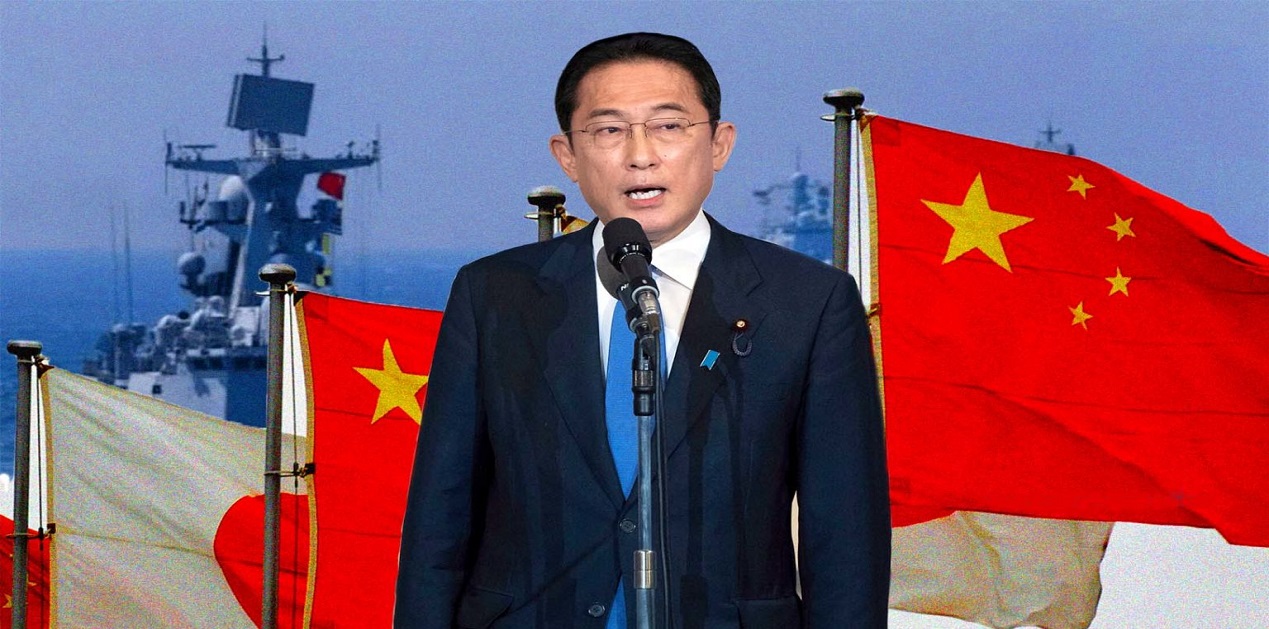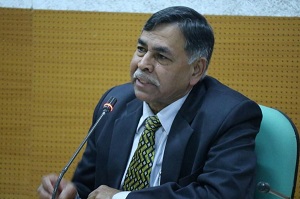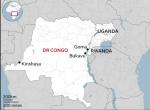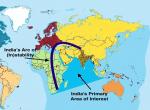After the election of Fumio Kishida as the leader of the ruling Liberal Democratic Party (LDP) on 29 September Kishida’s likely domestic and foreign policies shall come under scrutiny by Japan watchers and analysts. At the domestic level, both the task of getting the economy back on track and addressing the Covid-19 pandemic in terms of vaccination drive, etc shall be the focus for some time. The demographic challenges, declining birth rates and rapidly aging population involve undertaking serious social welfare measures and thus cannot be overlooked. This commentary, however, focuses on what would be Kishida’s foreign policy priorities, especially how he crafts his China strategy, given that Japan’s relations with China are frayed with serious trade and territorial issues over the Senkakus and that Japan is cooperating with other countries that share common values to cope with the common China challenge.
Analysts are dissecting if Kishida who himself was Foreign Minister for close to five years in Abe administration shall follow the footsteps of Abe’s foreign policy or pursue on his own. [1] But before examining Kishida’s likely China policy, it might be pertinent to note how the people perceive his policy stances.
Let us examine first the support rate of his new Cabinet. Soon after he took power, the support rate of his Cabinet stood at 49 per cent, according to a poll by the Mainichi Shimbun and Social Survey Research Center conducted on 4-5 October in contrast to his predecessor Yoshihide Suga who had 64 per cent popular support when he assumed power in September 2020. [2]Normally when a new leader takes office, expectations from people remain high and if opinion surveys are undertaken soon after a new leader takes office, he scores big. This high support base could quickly dissipate if the delivery of his government falls short of peoples’ expectations. Interestingly, Suga’ support rate was even bigger than Kishida but fell to a significant low and therefore it is to be seen how Kishida meets the people’s expectations to keep his support base satisfactory. Moreover, peoples’ mood could widely swing from admiration to disapproval depending on what policies the leader puts on the table. Taking advantage of the current rate of popularity, Kishida has decided to dissolve the Lower House and hold election on 31 October as against the earlier speculated dates of either 7 or 14 November.
Kishida’s first overseas engagement is to attend a summit of the Group of 20 major economies on 30-31 October in Rome. [3] He is however likely to skip the UN climate change talks starting 31 October at Glasgow, Scotland. While in Rome, Kishida is expected to have bilateral talks with US President Joe Biden and other world leaders on the sidelines of the G-20 summit. Though Kishida’s trip to the Italian capital could affect his campaign schedule for the general election, it is unlikely to dent his chance. Nevertheless, it is something unusual for a Prime Minister to travel abroad once election dates have been announced.
Biden was the first foreign leader with whom Kishida had a 20-minute phone talks since taking office. Both Biden and Kishida agreed to cooperate to strengthen the alliance relationship and cooperate in regional security in the face of growing challenges from China and North Korea. [4] Biden reassured Japan of the US commitment to defend the Japanese-controlled East China Sea island of Senkaku, which China also claims and has escalated its coast guard activity in the area. [5] Both agreed to meet at an early date. Like previous Japanese leaders, Kishida understands the significance of honouring the time-tested alliance relationship with the US that has served as the lynchpin of Japan’s diplomatic and security policies. This policy has now been broad-based by sculpting partnerships with other democracies in Asia and Europe. Japan hopes that further elevating this partnership shall serve the foundation of peace and prosperity in the Indo-Pacific region and the entire world.
The biggest worry is how to deal with a menacing China and nuclear-armed North Korea that has lips and teeth relationship with China. This aspect could eventually work as a trigger for Japan to beef up its own missile and naval defence capabilities, including possibly revisiting its nuclear option. Though such a scenario seems to be far-stretched for now, Kishida’s priority would be to establish a stable relationship with China as he understands that it is the perquisite for maintaining cordial working relationship and protecting their common economic interests. It could be also a win-win situation for both countries as well as the international community. This does not mean that Kishida should be shy in conveying concern about China’s assertive activities in the region and cooperate with other like-minded democracies. It was appropriate therefore when Kishida spoke with Xi Jinping on telephone on 8 October for 30 minutes he raised concerns about China’s escalating activities in disputed maritime territories and human rights problems in Hong Kong and the Xinjiang region. [6]
Strengthening the Quad shall be another priority for Kishida. Quad that also includes the US, Australia and India has common position on dealing with China’s policy of coercive economic measures and unilateral attempts to change the status quo in the regional seas. Kishida already had online talks with his Australian counterpart Scott Morrison and both agreed to strengthen their security and economic ties bilaterally and as a part of the Quad alliance. Kishida who was seen as an indecisive moderate has now turned to be a security and diplomatic hawk and taking a more conservative stance on gender equality and other issues.
Critics express concern that Kishida is acting as Abe’s puppet as his shift to hawkish posture would demonstrate. Historically, Kishida’s faction within the LDP has a dovish tradition. It was founded by former Prime Minister Hayato Ikeda and eventually succeeded by Prime Minister Masayoshi Ohira. When Ohira was Foreign Minister, he travelled to Beijing in 1972 together with then-Prime Minister Kakuei Tanaka to normalise relations with China. But the sudden change from a dovish to a hard-line policy against China, though would appeal the party’s conservatives, including Abe, might be seen by China differently. It is not clear at the moment if Kishida’s earlier stance on protecting universal values as freedom, democracy, rule of law and human rights would gel well with authoritarian regime like China, which does not share the same values as democracies. Given the changing geopolitical and geostrategic matrix in the Indo-Pacific, going soft on China could not be an option for Kishida. The observations made in Global Times editorial[7] that exulted optimism that Kishida would ease Japan’s increasing anti-China sentiment in preference for a tough competition against China might be off the mark. The editorial observed that Japan should not “shape itself as China’s enemy under any circumstances”. It advised that Japan should never harbour any thoughts to return to the road to militarism. Beijing also feels uncomfortable that Japan is aligned with multilateral military alliance such as the Quad which China perceives as the Asian NATO, though the Quad members have repeatedly repudiated the accusation that it is a military alliance such as the more recent AUKUS, the new Australia, British and American security partnership, in which, to China’s relief, Japan is not a member. China is also sensitive that it perceives Japan’s Self Defense Forces are aligning with the American interests, which is clearly not the case ever.
On the issue of Taiwan, Sino-Japanese ties could nosedive as Japan openly sides with the island nation on its sovereignty issue. Kishida has called for a further increase in Japan’s defence capability and budget, and vowed to stand up to China in tensions over self-ruled Taiwan that China claims as part of its territory. To complicate the relations further, Kishida welcomes Taiwan’s bid to join the Comprehensive and Progressive Agreement for Trans-Pacific Partnership (CPTPP), to which China has also applied to join. If Beijing succeeds in preventing Taiwan from joining the CPTPP by influencing other members by lure of economic assistance, it will further isolate Taiwan from the multilateral fora. Kishida is expected to see that it does not happen. [8]
Another challenge for Kishida would be addressing old issues such as revision of text books issue and visits to Yasukuni Shrine, seen as the symbol of glorifying Japanese war dead whose souls are enshrined in this serene place. Despite the dissenting judgment of the Indian judge Radha Binod Pal who exonerated all those who were tried for war crimes, the word ‘war criminals’ has got stuck in the public vocabulary. Besides the long-standing dispute over the Senkaku (called Diaoyu in China), Beijing objects to Japan siding with the US in establishing a supply chain that excludes China in a bid to undermine China’s economic future. Kishida plans to enact a law and create a new ministerial post to enhance economic security measures for Japan. It is to be seen how Beijing would react when the new measure is adopted.
It would be naive on Beijing’s part if it expects Kishida pursues policies that assuage Beijing’s feelings at the expense of Japan’s national interests. Kishida has already announced his policy on the economy, which he calls “a new capitalism” of growth and distribution to narrow the income gap between the rich and poor that widened under Abe. Kishida feels that Japan’s neoliberal economic policies of the past two decades that accentuated economic disparities by uneven distribution of economic benefits in the country must change. A strategy to redistribute wealth would address the widening gaps between those industries thriving and those suffering amid the pandemic would meet the objective of achieving “a healthy economic cycle”.
What could be problematic between Japan and China, besides the above-mentioned issues, is Kishida’s decision to set up the post of special advisor to the Prime Minister on human rights, in an apparent bid to counter China’s alleged human rights abuses in Xinjiang and crackdown on Hong Kong’s pro-democracy movement. [9] Beijing has already said that it would not welcome any foreign interference on its internal affairs. More importantly, Japan’s support to Taiwan’s cause and mention of Taiwan in the latest Defense White Paper could be issues that could have regional ramifications. One cannot imagine how a summit between Kishida and Xi Jinping can be envisaged when in 2022 both countries mark the 50th anniversary of diplomatic relations. In the present situation that seems to be a far cry.
China was however happy that Sanae Takaichi, seen as a right-wing nationalist and who had promised to continue visiting the controversial Yasukuni Shrine did not make the cut. Beijing felt that had Takaichi become Japan’s Prime Minister, ties between Japan and China would have deteriorated sharply. It may be recalled that when former Prime Minister Junichiro Koizumi repeatedly visited the war-linked shrine in the 2000s, it sparked a wave of anti-Japanese protests in China, jeopardizing the safety of Japanese citizens living in the country. That possible situation has been averted now with Takeichi’s defeat.
With the present bilateral ties suffering from suspicion and mutual distrust, a cooperative attitude could reap mutual and regional benefits. [10] Kishida would not want to derail already frayed ties with China to deteriorate further since China is Japan’s biggest trading partner and therefore he shall have to strike a balance between Japan’s relations with the US and China.
As regards ties with India, Kishida is likely to further deepen and expand relationship in multiple areas, including economic, strategic/security, political and cultural. Unlike Japan’s relations with China and South Korea, India-Japan relations have never suffered from historical irritants. On the contrary, there is plenty of soft power at play in the past and continues till present which would help hone strengthening the multifaceted relationship.
Even with South Korea, Kishida had negotiated an agreement on the so-called ‘comfort women’ issue. Though that agreement fell apart, South Korea can have a sense of comfort in dealing with Kishida to resolve the long-pending issues of history and present on-going case of demand for compensation for Korean labour in Japanese factories during the colonial period. It looks like Kishida is heading towards a long tenure, a la Abe, and thus a long spell of political stability. With the experience of being Foreign Minister during Abe administration for four years and seven months, Kishida knows how to handle Japan’s diplomacy.
India should see Kishida as an old friend having visited this country several times in the past. In fact, after he became the Foreign Minister in 2015, he chose India as the first country to visit and engage with the leadership. With Kishida at the helm now provides a new opportunity to take India-Japan relationship to a higher level. Since both India and Japan have problems in dealing with a menacing China, it is a good opportunity for both countries to coordinate their strategies in managing relationship and arrest ties with China from drifting into more uncertain future.
Like Kishida’s telephone talks with Biden, Xi Jinping and Morrison, Kishida and Indian Prime Minister Narendra Modi too had their first telephone conversation on 8 October and reviewed cooperation under Quad. [11] Both leaders expressed satisfaction at the rapid progress in the Special Strategic and Global Partnership between the two countries, and agreed to further enhance cooperation in a variety of areas, including high-technology and futuristic sectors. Modi invited Japanese companies to benefit from India’s economic reforms through greater investments.
Though bilateral economic relations shall remain on track, what was significant in their talks was their mention of increasing alignment of perspectives and robust cooperation between the two countries in the Indo-Pacific region. It transpires that all the four Quad countries are on the same page in securing peace and stability in the Indo-Pacific region in the face of an assertive China. Modi invited Kishida to visit India at his earliest convenience for a bilateral summit that was disrupted because of the raging pandemic. The shared common democratic values, cultural and spiritual links further provide additional heft in elevating bilateral ties further. Keeping China in focus, other details in the economic and cultural realm have been kept out of this analysis for intense scrutiny and shall be dealt separately. Irrespective of change in leadership in like-minded democracies in the Indo-Pacific region, there shall be no change in focus so long as China remains the elephant in the room.
Endnotes
[1] “Will Japan’s China policy change under Kishida’s leadership?”, 1 October 2021, https://fastsentinel.com/news/will-japans-china-policy-change-under-kishidas-leadership/
[2] “Support rate for Japan’s new Cabinet stands at 49%: Mainichi polls”, Mainichi Daily News, 5 October 2021, https://mainichi.jp/english/articles/20211005/p2a/00m/0na/023000c
[3] “Kishida to attend G20 summit in late October, source says”, The Japan Times, 3 October 2021, https://www.japantimes.co.jp/news/2021/10/03/national/politics-diplomacy/kishida-g20-summit/
[4] Mari Yamaguchi, “Japan’s Kishida, ,Biden agree to cooperate on China, N. Korea”, 5 October 2021, https://apnews.com/article/joe-biden-fumio-kishida-japan-north-korea-china-a2ce43b49e2dd77d99d7147de7d6e5a2
[5] “Biden promised Japan to defend disputed islands--new Japan PM Kishida”, Asahi Shimbun, 5 October 2021, https://www.asahi.com/ajw/articles/14454398
[6] “Kishida, China’s Xi hold first talks, agree on need for dialogue”, Asahi Shimbun, 9 October 2021, https://www.asahi.com/ajw/articles/14457443
[7] “It is hoped Kishida won’t push China-Japan relations towardhostility”, Global Times, editorial, 29 September 2021, https://www.globaltimes.cn/page/202109/1235510.shtml
[8]For the author’s views on this, see Rajaram Panda, “Taiwan and China tussle over joining CPTPP”, 8 October 2021, https://www.vifindia.org/article/2021/october/08/taiwan-and-china-tussle-over-joining-cptpp
[9] “China to watch diplomatic policy of Kishida, Japan's next PM”, Mainichi Daily News, 29 September 2021, https://mainichi.jp/english/articles/20210929/p2g/00m/0in/066000c
[10] “Japan has chance to change China policy”, South China Morning Post, editorial, 2 October 2021, HTTPS://WWW.SCMP.COM/COMMENT/OPINION/ARTICLE/3150960/JAPAN-HAS-CHANCE-CHANGE-CHINA-POLICY?UTM_MEDIUM=EMAIL&UTM_SOURCE=CM&UTM_CAMPAIGN=ENLZ-OPINION&UTM_CONTENT=20211003&TPC
[11] “PM Modi speaks to Japan’s new PM Kishida, reviews cooperation under quad”, 8 October 2021, https://in.indianewsnetwork.com/20211008/pm-modi-speaks-to-japan-s-new-pm-kishida-reviews-cooperation-under-quad
(The paper is the author’s individual scholastic articulation. The author certifies that the article/paper is original in content, unpublished and it has not been submitted for publication/web upload elsewhere, and that the facts and figures quoted are duly referenced, as needed, and are believed to be correct). (The paper does not necessarily represent the organisational stance... More >>
Image Source: https://www.tokyoreview.net/2021/10/japans-new-prime-minister-from-china-dove-to-china-hawk/











Post new comment